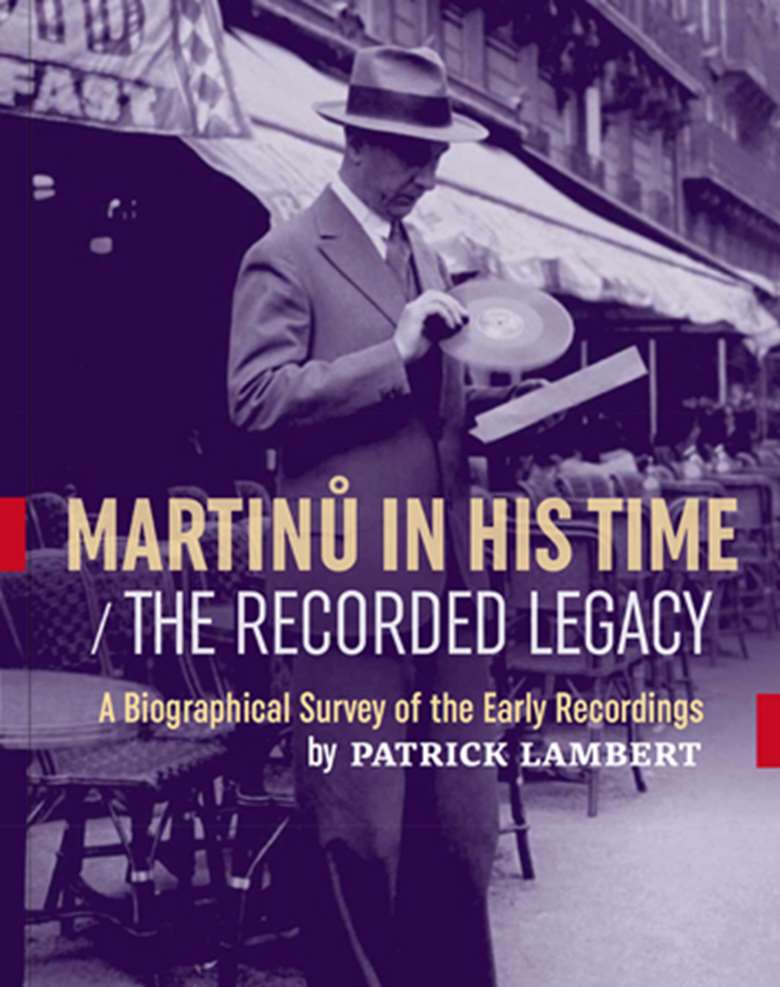Martinů on record
James Jolly
Tuesday, February 21, 2017
The story of a composer who always enjoyed a close relationship with the record industry

The writer and broadcaster Patrick Lambert is giving a talk on Bohuslav Martinů at the Embassy of the Slovak Republic on March 7. James Jolly has read Lambert's book, 'Martinů in His Time: The Recorded Legacy', on which the lecture is based
Bohuslav Martinů was born in December 1890 in – and this is one of those facts that regularly makes an appearance in musical quizzes – a church tower high above the Czech town of Polička. He would die, an exile from his country of birth, in Switzerland 68 years later in August 1959. In between, he would compose an extraordinarily large amount of music, for a dizzying variety of ensembles and chamber groups, not to mention 16 operas, six symphonies, five piano concertos, two violin concertos, two cello concertos, numerous concertante works for a bewildering array of instruments, a huge number of chamber works (including seven string quartets), as well as compositions for piano, organ and harpsichord – not to mention numerous songs and choruses. His catalogue, using ‘H’ numbers (compiled by Harry Halbreich), totals 382 works.
Patrick Lambert, an authority on Martinů (who wrote a superb centenary overview of the composer’s life and works for Gramophone’s December 1990 issue), has written a fascinating study that surveys Martinů’s discography, particularly during the early years of recordings. Martinů was born shortly before the advent of recorded music so, by the time he was established as a composer and living in Paris (a city he’d initially planned on visiting for three months, but where he settled for 17 years), the ‘industry’ had grown up alongside him and he was an early beneficiary.
Lambert’s story of Martinů on disc starts with the first recording of his music, a pair of Columbia 78s, made in May 1929, of his Duo for Violin and Violoncello and played by Odette Rithère (violin) and André Huvelin (cello). Martinů was 38 at the time and his life in Paris was bringing him into contact with some of the major musicians of the day. And not just in France: by the end of the 1930s, his Second Piano Concerto had been heard in Prague, Vacláv Talich conducting the Czech PO for Rudolf Firkušný, and in London with Rafael Kubelík conducting. His opera Juliette earned him critical acclaim in Prague in 1938 and, two years later, his Double Concerto for Two String Orchestras was heard in Basel. When the Nazis entered Martinů’s homeland, his music was immediately banned (a phone call from Firkušný telling him that German forces were about to enter Paris most likely saved his life and that of his family).
Martinů’s American period saw his music being championed by the likes of Serge Koussevitzky, Mischa Elman and Erich Leinsdorf. These were also the years of his symphonies: No 1 was premiered in Boston in 1942, No 6 in the same city in 1953 (five of the six were heard first in the USA). Live performances and off-the-air recordings were a regular occurrence and, in May 1952, Martinů made his debut in the pages of The Gramophone: Lionel Salter welcomed the plum-label ‘special-order’ 78s of the Double Concerto with Kubelík conducting the Philharmonia (‘there is general agreement that he is a major figure in the musical world of today’).
For those of us who love Martinů’s music, his signature is quickly identifiable – whether it’s the voicing of the instruments he chooses, his rhythmic virtuosity, or his ability to invest a piece with terrific life – and makes for truly devoted followers. Martinů was extremely lucky throughout the 1950s to attract a group of highly placed advocates. As the official antipathy to his music was relaxed from late 1954 onwards, his music would also make a return to the concert halls and recording studios of Czechoslovakia, even if he himself never managed to return to his homeland – surely one of the saddest of musical exile stories. His late orchestral score, Les Fresques de Piero della Francesca, received its world premiere at the Salzburg Festival in 1956 with Kubelík conducting the Vienna Philharmonic and, the following year, its US premiere under the baton of George Szell in Cleveland. Kubelík would recorded the work in April in London with the RPO for HMV (The Gramophone’s Lionel Salter was clearly not taken, describing it as a ‘thick and graceless pudding of a work’).
In the introduction to his book, Lambert recalls the then-Director of the Proms John Drummond’s indifference towards Martinů’s music in the composer’s centenary year (1990): ‘Only very begrudgingly did he include a token performance’ of the Fourth Piano Concerto. Since then, Martinů’s music has done well on disc – largely and, slightly ironically given Drummond’s antipathy, helped by Jiří Bělohlávek’s advocacy when he was in charge of the BBC SO (yielding recordings of Juliette and the six symphonies) as well as Sir Charles Mackerras’s championship.
Martinů in His Time: The Recorded Legacy tells an engaging story of a fascinating man, the story of a modern musician whose musical development was mirrored on record throughout his life, and in Patrick Lambert he has found a passionate and hugely knowledgeable champion.
Patrick Lambert's lecture is on Tuesday March 7 at 6.30pm at the Embassy of Slovakia, 25 Kensington Palace Gardens, London W8 4QY – for more information and to buy tickets, click here; 'Martinů in His Time: The Recorded Legacy' (Bohuslav Martinů Institute, 83pp, ISBN 978-80-906098-2-2) is available to buy for £8.50 (incl p&p) from the Dvořák Society











